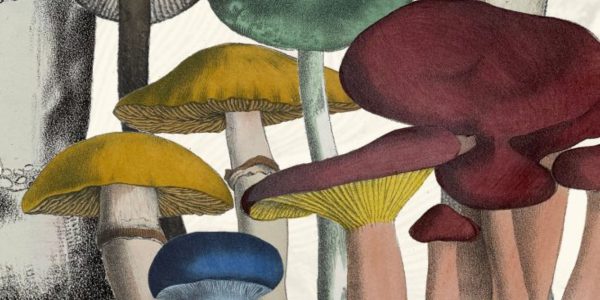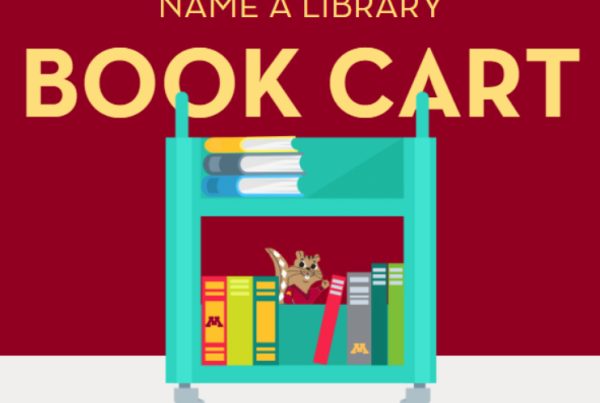We’re celebrating 2023 with a look back at our favorite stories of the year that feature the innovative, meaningful, fun, and purpose-filled work at the Health Sciences Library and the Wangensteen Historical Library of Biology and Medicine.
10. We supported student wellbeing
Our semester-end Stressbusters events invited students to enjoy tea and treats, grab some earplugs, and write positive post-its to encourage their friends to finish the semester strong. Our Virtual Reality (VR) Studio began VR for stress reduction workshops. Quiet and group study rooms and our computing lab provide access to purpose built spaces for focus and learning.

Positive Post-It Notes from student to students during Stressbusters.
9. We opened the doors to our special collections
Our Wangensteen Historical Library of Biology and Medicine curated several exhibits that welcomed scholars, artists, teachers, and learners at all levels to explore their renowned collection of rare books and artifacts from 1430-1945. This year, exhibits focused on mushrooms (for cooks, healers, and murderers), the healing power of hot springs, arms and armor, student projects, spooky monsters, and beautiful blooms.

Mycophobia/Mycophilia: Fungi in Sickness & in Health exhibit.
8. We led important conversations around social determinants of health
Looking back (way back) at topics related to health and wellness helps current health professional students place their learning in a broader context so they can disrupt harmful practices and amplify missing and absent voices in the history of health. Our curators are leading this initiative, in partnership with Dr. Priya Sury, bringing these important conversations to medical residents and all first year medical students.

Research Assistant Liz Root presents to medical residents at Regions Hospital.
7. We highlighted collection strengths and hidden gems
Our 5th floor service desk now features a rotating book display where you can browse books (print and electronic) on topics such as orthopedics, culturally competent care, yoga, dentistry, LGBTQ+ health, and more!

Resident library skeleton showcases book display on orthopedics.
6. We hosted an Open House
The second annual Health Science Education Center (HSEC) Open House introduced a new crop of students to resources at the Health Sciences Library, from virtual reality and laser cutters, to exhibits, expert staff, and study spaces.

Open house visitors create prints based on images from the Wangensteen Historical Library.
5. We welcomed new colleagues
Ryn Gagen, Merete Christianson, Brooke Olson, and Sana Siddiqui joined the Health Sciences Libraries, providing skills related to information seeking, use, and sharing — and bringing amazing ideas and energy to address the information needs of researchers, instructors, students, and health practitioners.

Left to right: Ryn Gagen, Merete Christianson, Brooke Olson, Sana Siddiqui.
4. We strengthened our collection to reflect diverse ways of knowing
Our growing Graphic Medicine collection takes complex health related themes and makes them more accessible to readers. Here are a few titles to explore: Graphic Public Health: A Comics Anthology and Road Map; Graphic Medicine Manifesto; Tangles: A Story About Alzheimer’s, My Mother, and Me; COVID Chronicles: a comics anthology; and Clinical Ethics: A Graphic Medicine Casebook.

Graphic medicine collection at the Health Sciences Library.
3. We offered more ways to learn — including in Virtual Reality
Our growing collection of Virtual Reality experiences now includes Embodied Labs! Visit our Virtual Reality Studio for an immersive first person perspective of people experiencing macular degeneration, hearing loss, social isolation, and Alzheimer’s Disease. Trans health and end of life experiences are also available.

Academic Technologist Charlie Heinz demonstrates Embodied Labs.
2. We made our artifacts more findable
It’s all adding up: 2 curators + 1 public services supervisor + 1 cataloger + 1 photogrammetry expert + lots of student photographers + 4,000 artifacts + $100K from the Minnesota Historical Society Arts and Cultural Heritage Fund = better access to our health-related artifacts that have a connection to Minnesota’s health history!

Photographers capture images of artifacts to enhance the catalog record, making artifacts more findable.
1. We helped health professional students grow as critical thinkers
What’s old is new again in Dr. Karin Quick’s Dental Professionalism course. Through our partnership, all Year 1 DDS students interacted with rare books and artifacts to understand how the items have shaped attitudes towards patient care and how this knowledge can inform and strengthen dental practice.

Curator Lois Hendrickson uses primary source materials to engage dental students in discussion.
From all of us to all of you — thank you for a wonderful 2023. We are looking forward to 2024 and to more opportunities to partner as we advance scholarship, teaching, learning, and care across the health sciences.

Your colleagues and partners at the Health Sciences Libraries.




